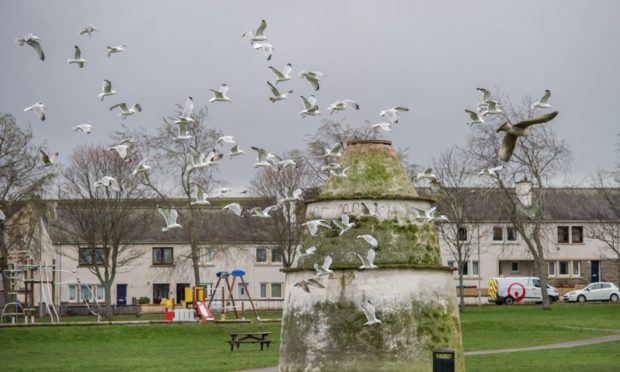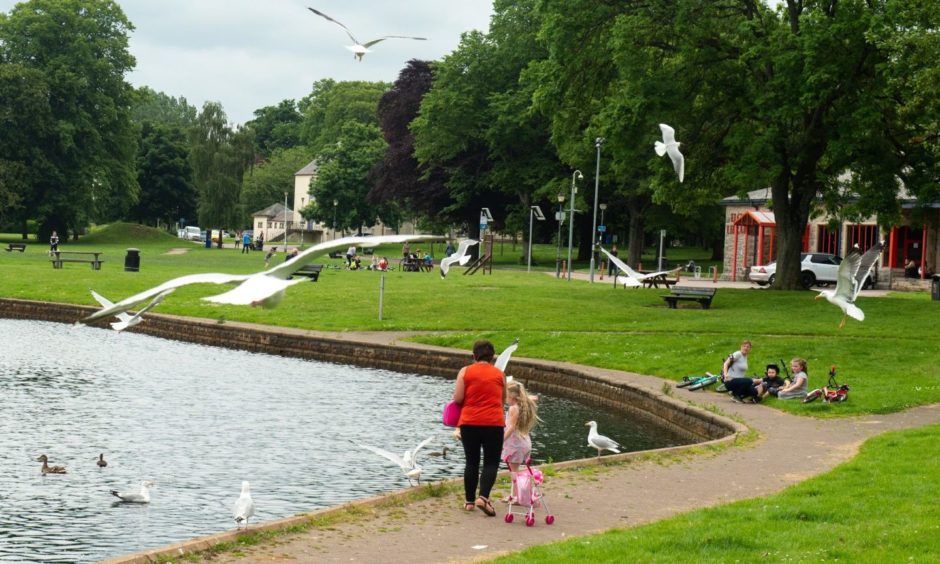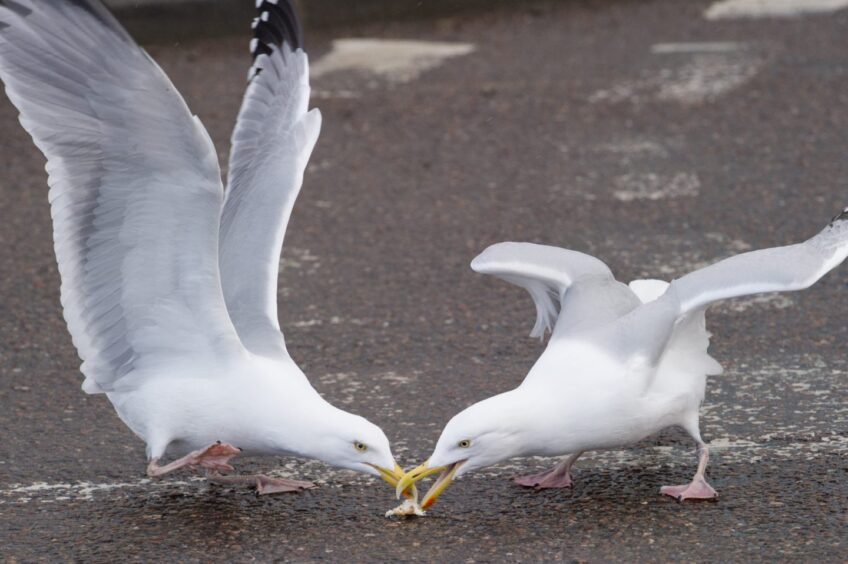Elgin Community Council is calling on other groups across Scotland to help them lobby government to address the “blight” of seagulls – as they claim numbers documenting their decline “don’t add up”.
Vice-chairman Brian Irvine has already received backing from other community councils in Moray.
And he is reaching out to others across the country in the hopes of kick-starting a national movement.
The group plans to write to Scottish Government minister Jim Fairlie, who has responsibility for wildlife management – calling for NatureScot to carry out a fresh survey of urban gulls.
‘Gulls are protected – but we don’t think the numbers are right’
Herring, lesser black-backed and greater black-backed gulls are the species most likely to cause problems in towns and cities.
And though it may not seem like it to anyone who has had a sandwich snatched from their grasp, or been kept awake by squawking chicks, numbers are falling.
Since the last seabird count herring gull numbers are down by 53%, lesser black-backed gulls by 48% and greater black-backed gulls by 63%.
The figures published in November last year are for Scotland.
An urban nesting census was included in the survey, and showed these areas hold a “significant proportion of breeding gulls”.
Mr Irvine told a meeting of the community council this week he has received positive responses from representatives of other community councils across Moray as he aims to get something done about the birds.
He said: “NatureScot are not really helping us.
“We need to get a letter off down in Holyrood.
“And we need to write to community councils outwith Moray, including Nairn and Dingwall where there’s problems, and tell them what we’re doing.
“The gulls are protected species. But we don’t think the numbers are right.”
Many lives in Elgin blighted by seagulls
There have been incidents where people in Elgin have been injured by gulls.
The birds regularly steal from people eating or carrying food, especially in the town centre.
And chairman Alastair Kennedy felt many lives had been “blighted” by the gulls.
For the last two breeding seasons sonar devices have been placed around Elgin to deter the birds from reproducing.
Are sonar devices working?
On some properties nests reduced by 90%. But some areas in the town did not see any benefit.
Moray councillor for Elgin South Graham Leadbitter said residents needed to “hold their nerve” when it came to the sonar devices.
He added it can take up to six years for them to have a significant and sustained impact.
A spokesperson for NatureScot said censusing gull numbers in town and cities is important.
But it is a complex process and there are no plans to carry one out at the moment.
What can I do if I am having problems with seagulls?
They said: “We agree that understanding the change in urban gull population is important, especially as they increasingly represent a significant proportion of the overall breeding populations of herring and lesser-black-backed gulls.
“There have been discussions at a UK level regarding the possibility of such a survey but currently none is planned.
“Censusing urban nesting gulls is difficult, and a difference in census methods meant that a comparison solely of urban gull data from the last census 20 years ago was not possible.”
He added: “However, seabirds count provides a comparative baseline for the next census.
“For herring gulls and lesser black-backed gulls they now appear to have a higher proportion of their UK breeding population nesting in non-traditional nest sites compared to more traditional nest sites along the coast or on islands.
“But this does not mean there has been an increase in numbers in their populations as a whole.”
They encouraged property owners with gull problems to get in touch, and to install prevention measures as soon as possible.
Licences can be obtained to remove gull nests and eggs, but are usually only issued when there is a risk to public health or safety.




Conversation